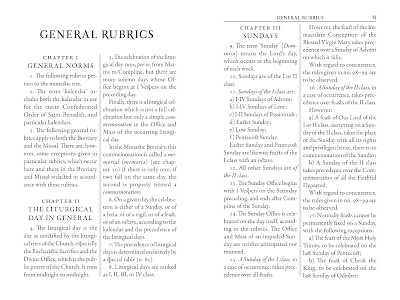We are pleased to share this announcement from a new publishing outfit, Libri Sancti Press, which was launched in St Louis, Missouri, just three months ago. They have just issued A Companion to the Monastic Breviary, a unique publication consisting of two parts. The first is a translation of The General Rubrics, The General Rubrics of the Breviary, and The Year and Its Parts of the Breviarium Monasticum of 1963, the first such translation ever made. It also includes a new English “Table of Movable Feasts and New Easter Table,” which includes updated Dominical Letters, Golden Numbers, and Martyrology Letters until 2054, as these have been omitted in modern publications. The second part consists of a spiritual, instructional, and historical commentary on each of the hours of the Monastic Breviary. The purpose of this book is to provide all people, but especially oblates and novices, with a resource to better understand and learn the traditional monastic office.
Part 1: Liturgical Documents, including:- General Rubrics
- General Rubrics of the Breviary
- The Year and its Parts
- Revised Table of Movable Feasts and New Easter Tables
- Of the rubrics
- Of the spiritual meaning of each hour
- Of the historical development of each hour
‘The Benedictine Office has become a popular choice in recent years, in part because of the support resources available for it, such as the Monastic Diurnal. This volume adds to these by providing an excellent English translation of the rubrical materials of the 1963 breviary, as well as some supporting notes on the individual hours that will be of particular assistance to those seeking to penetrate the arcane mysteries of the rubrics. It will be a useful addition to the libraries of regular users of the Benedictine Office who lack the necessary Latin to read the original.’– Kate Edwards, author of the blog Saints Will Arise







